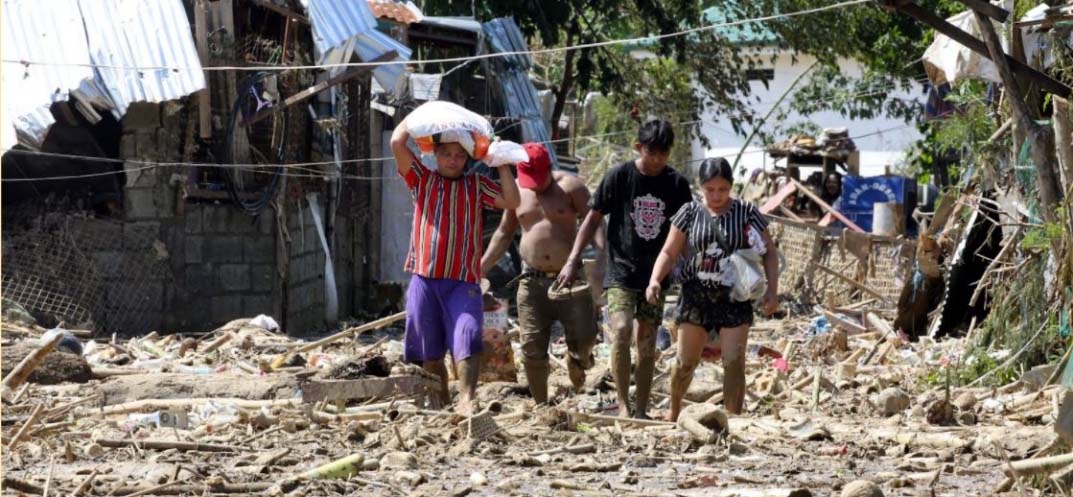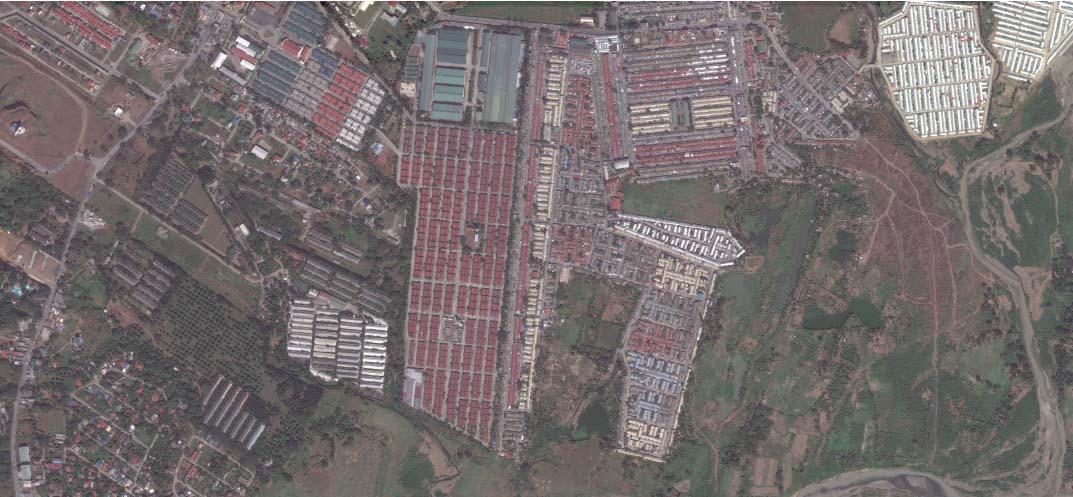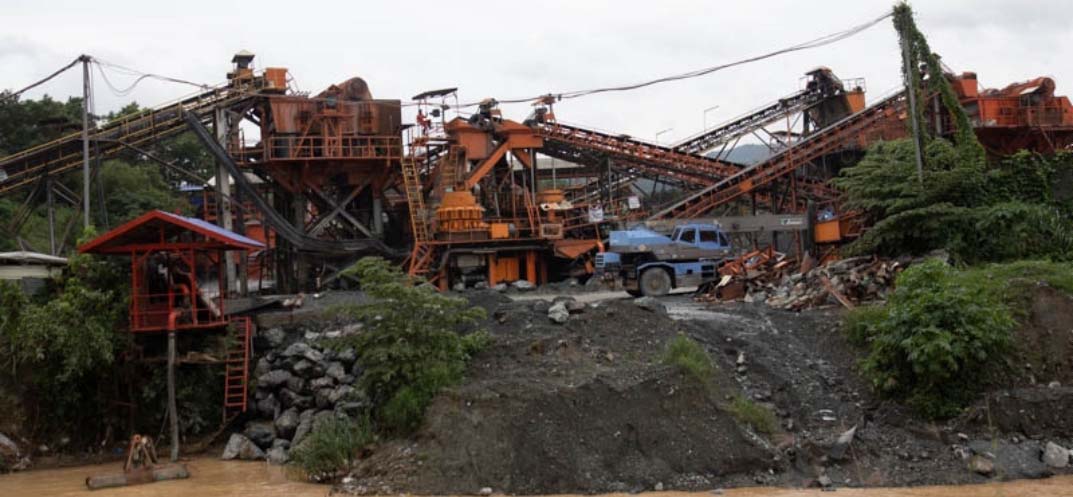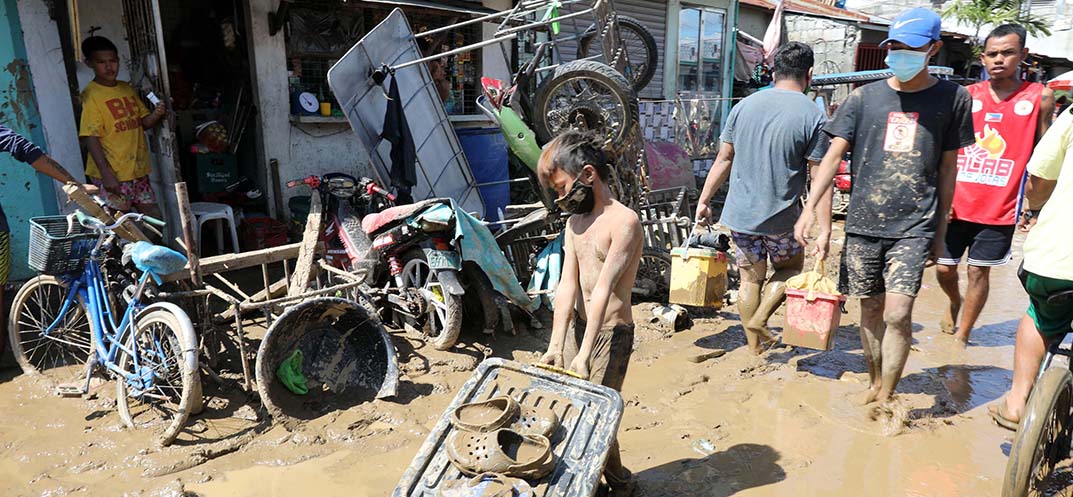RIZAL, Philippines — It felt like the end of the world for Edith*, a resident of Kasiglahan Village in Rodriguez town, formerly known as Montalban.
On November 12, 2020, in the dead of night, Edith, her husband, and her neighbors scrambled to their rooftop to escape rampaging floodwaters.
Edith, who lived among the row houses by the riverside in Barangay San Jose, watched in horror as floodwaters that brought debris, including logs from the mountains, tore through the streets and submerged their homes.
Flooding is not new in Kasiglahan, a socialized housing project of the government, but the deluge brought by Typhoon Ulysses (Vamco) was unlike anything the 55-year-old mother had ever experienced.
“We felt like we didn’t have any hope then,” she recalled through sobs.
But Edith was able to recover after a year. She has since resumed the operations of her sari-sari store, unlike her neighbors who were rendered jobless by the typhoon and the pandemic.
The fear, however, still lingers.
“After Ulysses, people here get anxious every time it rains,” Edith said.
For the residents, Ulysses brought the worst flooding in Kasiglahan Village since it was constructed in 1999.

They said they were caught off-guard. The rivers nearby overflowed and, before they knew it, the dike broke and floodwaters rushed in.
“The waters rose very quickly, unlike the ones before. We were not able to bring anything, not even extra clothes. We were only able to save ourselves,” said Liza*, a local of Rodriguez who has been living in the village since 2016.
According to the National Housing Authority (NHA), around 7,591 housing units were affected during the flooding. The disaster wrecked Liza’s house and washed away her store.
With her source of income gone, Liza has no money to fix her home. Now, the 50-year-old widow and her children have been staying at a friend’s house just across their destroyed home.
Located within the Upper Marikina watershed, Kasiglahan Village is a resettlement site for Metro Manila’s poor who had been ejected from the capital region’s so-called “danger zones.” It was conceptualized during the administration of former President Fidel Ramos, but the construction started during the term of former President Joseph Estrada.
Bounded by the Marikina River in the south and the Puray River in the east, Kasiglahan—particularly the extension housing project called 1K2—is vulnerable to flooding.
In 2012, it was ravaged by floods due to monsoon rains, forcing people to climb onto their roofs. As a result, people who lived there abandoned their houses and moved to a safer area in Kasiglahan.
Two years later, the village was once again flooded after Tropical Storm Mario (Fung-Wong) dumped heavy rainfall. In 2018, Liza said the southwest monsoon caused knee-deep flooding.
But these events were nothing compared to the destruction brought by Ulysses, residents said. And Ulysses would not be the last catastrophic storm that would trigger massive flooding as the archipelago is regularly hit by cyclones that are expected to become stronger and more frequent due to climate change.
Raymund Abad, district manager of the NHA office in Rizal, said the initial plan was to relocate evicted urban poor communities within Metro Manila. But the absence of affordable land in the capital region prompted the government to build a resettlement site in Rodriguez.

Urban poor advocate Chester Arcilla said the sites of socialized housing projects—such as that of Kasiglahan—were low-priced because “those lands are not safe to begin with.”
The area where 1K2 is standing used to be a rice field, residents said.
Most of the current residents of 1K2 took over housing units that had been left idle for years after the area was declared by the local government a “danger zone” in 2012 following massive flooding in the village.
Kasiglahan is also at risk of earthquakes due to its proximity to the West Valley Fault.
In 2015, Advocates of Science and Technology for the People discovered structural issues: the houses in Kasiglahan might not withstand strong storms and earthquakes.
The group said that the housing units did not have adequate structural elements required by the National Structural Code of the Philippines (NCSP) such as concrete reinforced columns needed to keep houses sturdy. The spacing of the rebar reinforcement of hollow blocks also did not match the requirements of the NCSP.
Agham found that the elevation of the row houses with respect to the nearby rivers might be “inadequate” for flood protection.
Responding to the concern of residents and scientists that Kasiglahan is a dangerous place for the urban poor, Abad said the project passed environmental, engineering and geological assessments.
But he said the agency was “constrained by budgetary limitations” back then.
“Our budget at the time was P75,000 per housing unit. Usually, that will answer for core housing units only. Unlike today, we have already upgraded our standards. Houses are now more durable, more resilient because of our past experiences,” Abad said.
NHA was the main implementer of the P1.6-billion Kasiglahan Village 1 housing program. The New San Jose Builders was the developer of the housing project.
Rodriguez, which borders Quezon City on the west, has been a preferred site of a number of housing projects for informal settlers. The town is located on the slopes of the Sierra Madre mountain range.

For the villagers and the scientists, the culprit behind the disaster that befell Kasiglahan was not just the typhoon. The rampant and poorly regulated quarrying operations upstream aggravated the devastation caused by Ulysses, they said.
Liza, who has lived in Rodriguez all her life, said they had experienced flooding even before companies began chipping away at the mountains.
But the floods then were relatively small and not as destructive as the one that hit the community last year. There was also so much mud during the onslaught of Ulysses.
The province supplies aggregates used in the government’s massive infrastructure projects such as the Metro Rail Transit-Line 7.
Agham secretary general Feny Cosico said the degradation of the Upper Marikina watershed has greatly diminished its ability to retain water and caused massive siltation in drainage canals and rivers.
“Quarrying is happening upstream and at a higher elevation than Kasiglahan. This shows the great risk that communities downstream are facing,” Cosico said.
According to the Mines and Geosciences Bureau (MGB) Calabarzon, there are 27 existing and valid Mineral Production Sharing Agreements within the province of Rizal, of which 24 are outside the Upper Marikina River Basin Protected Landscape.
Three of the MPSAs, covering an area of around 427 hectares, are held by three firms in Rodriguez.
Additionally, nine quarry firms—all in Brgy. San Isidro in Rodriguez—were issued permits by the provincial government. These quarries have a total land area of 42 hectares.
Following the massive flooding in November last year, the provincial government ordered a stop to all small-scale quarrying and mining operations in Rizal. MGB Calabarzon said the order is still in effect.
But the MGB said quarrying was not solely to blame for the flooding in Rizal and Marikina City. It said an oversaturated watershed, heavy rainfall and silted tributaries contributed to the problem.

“The contributions of these operations to the flooding and siltation of the Marikina River are only minimal,” MGB said in February.
"Several factors including rapid urbanization, natural erosion, deforestation of portions of the Sierra Madre Mountain Range and other disturbances have greater contributions to the siltation of the Marikina River and subsequent flooding along the floodplains,” it added.
But MGB, a bureau under the Department of Environment and Natural Resources, should not downplay the effects of quarrying without producing modelling studies, said Paul Christian Yang-ed, a volunteer geologist of Kalikasan-People’s Network for the Environment.
“If you deforest and disrupt the slope, you disturb the structure of rocks there. If quarry materials are not properly stored, that can result in siltation. Silt has to go somewhere. That will descend and eventually settle down slowly in the river downstream. That will make the river shallow,” Yang-ed said.
“How large is the impact of quarrying? Definitely not negligible,” he added.
Residents claimed quarry operations in the town mushroomed when the Hernandez clan rose to power in Rodriguez. Philstar.com reached out to Mayor Dennis Hernandez, son of the clan patriarch, to confirm reports that they own quarry firms. He has yet to respond to our query.
In Kasiglahan, traces of hardened mud that once covered houses remained, a permanent reminder of the horror that residents went through one rainy November night.

Although early warning systems have been put in place, actual risk reduction measures such as the dike and the riprap destroyed by the floodwater have yet to be repaired a year later, leaving residents more exposed to severe flooding.
“This adds to the fear of residents especially now that the rainy season has begun,” Liza said.
While waiting for government actions, those who have decided to stay in Kasiglahan even after the disaster have lined up measures to lessen the impacts of massive flooding in the community.
They will bring their belongings to higher ground once water starts to rise and evacuate once asked to do so.
Edith wished she had enough money. She and her neighbors wanted to add another floor to their houses so they will not have to clamber onto rooftops when flooding happens again.
*Edith and Liza are pseudonyms to protect their privacy.
This story was produced in collaboration with the Kalikasan People's Network for the Environment, with the support of Internews' Earth Journalism Network and Asian Center for Journalism.